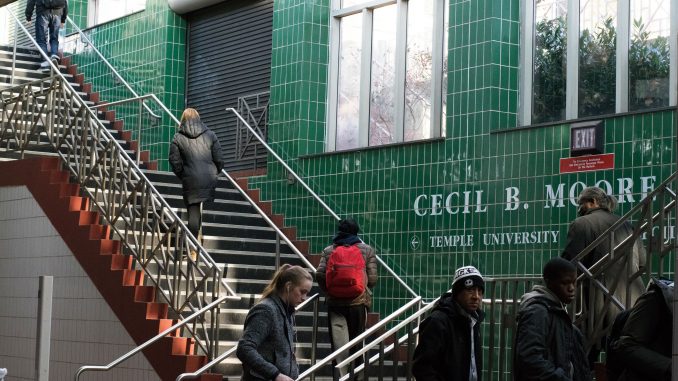
Signs will soon appear explaining exactly who is Cecil B. Moore in the SEPTA station named after him.
The Cecil B. Moore Freedom Fighters, a racial equality activist group based in Philadelphia for more than 50 years, has been advocating for the installation of informational boards since August 2015.
Francis Kelly, SEPTA’s assistant general manager for public and government affairs, said construction will begin soon and finish by the end of 2018.
In Nov. 2017, SEPTA proposed installing video boards to display information about Moore.
Called urban panels, the boards are commonly used throughout the SEPTA system to rotate advertisements or different trains statuses.
The Freedom Fighters and Karen Asper-Jordan, the organization’s leader, want to add the urban panels on the platform so passengers can learn more about the story of the station’s namesake rather than just seeing advertisements.
The panels will have facts about Moore’s upbringing, accomplishments and the role he played during the Civil Rights Movement fighting for racial equality alongside Martin Luther King Jr.
“The goal of the Freedom Fighters is to educate, especially the young people about Moore because he had a huge impact on the city here,” Asper-Jordan said.
“[We want to] make this a place where people can come to learn,” she added. “People need to see the significance, and due to gentrification I don’t know if Philadelphia will be the Philadelphia as we know it.”
Both SEPTA and the Freedom Fighters plan to add a space on the boards that rotate information about Moore’s life, like pictures and readings about when he worked as a lawyer, soldier and civil rights activist. Any other installations will depend on SEPTA’s budget, Kelly said.
Rusty Shackleford from South Philly takes the subway to Cecil B. Moore station to skate on Temple’s campus. He said he didn’t know there will be changes to the station, but added he’s looking forward to it.
“[The changes] will probably increase morals of the community and it’s good for the kids to learn,” Shackleford said. “It would strengthen this area.”
The Freedom Fighters travel throughout the city to educate people about the history of Moore and keep his legacy alive. Adding the panels to the station are one means of forwarding this mission, Asper-Jordan said.
So far, the group went to Temple University, Girard College, and elementary schools in the area.
“Our people are dying,” Asper-Jordan said, referring to the senior members of her group. “The goal is to talk to children to keep his legacy alive.”



Be the first to comment